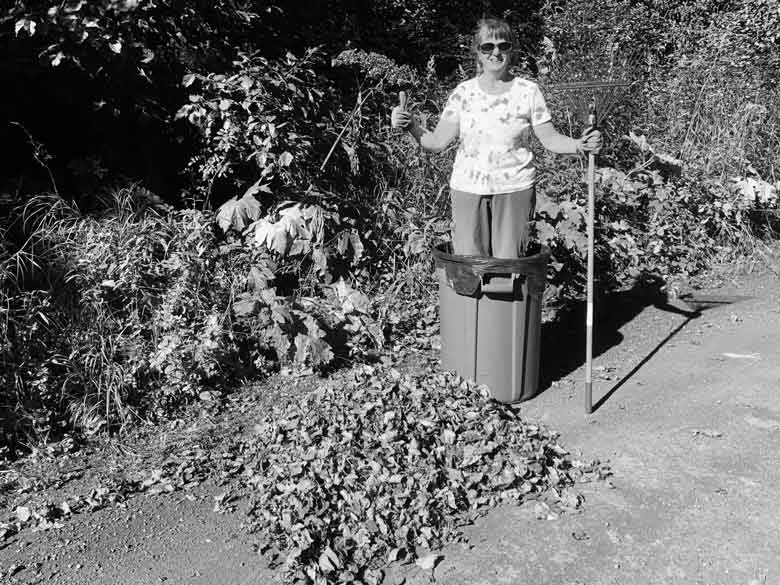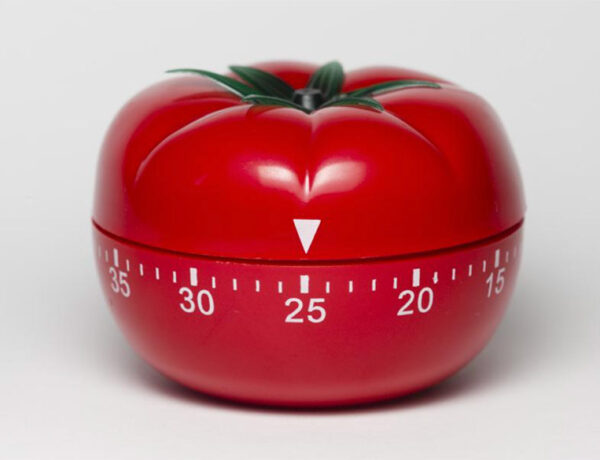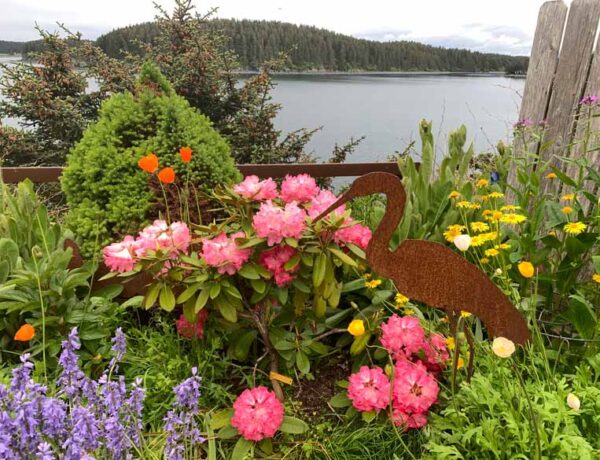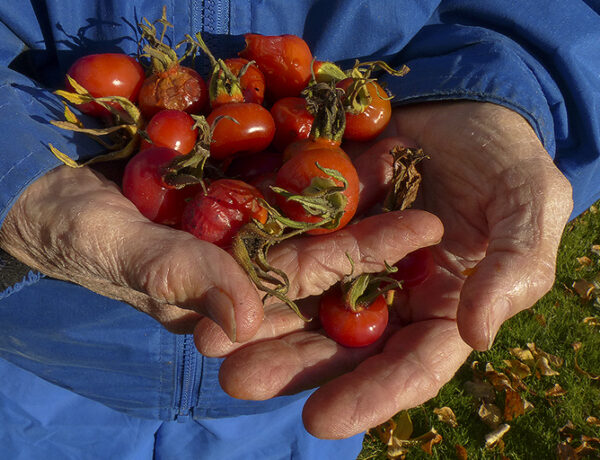I went on a slug patrol the other morning. This means setting my coffee cup down and snooping around the garden in search of slimy gastropods. I collected them with bare hands and then with slimy blessings, I tossed them over the cliff. Problem was, few of them ended up in the ocean, thanks to a low tide.
Thirty minutes later, my back was talking to me. Time to straighten up. You know the feeling.
[This organic gardening article was originally published in the Kodiak Daily Mirror, the hometown newspaper for Kodiak, Alaska. You can access the archive page for my past columns, written each week since 1986].
As I pulled my shoulders back, I came face to face with a beautiful stand of gladiolas, twinkling with last night’s rain. Took my breath away. I’d never really seen them so… stunning. And in October, no less.
As the saying goes,
The best surprises come when you least expect them.
But only if you’re receptive.
It’s like driving down a side street when you suddenly notice broad bands of butterscotch-colored cottonwood leaves piled along the road’s edge. I’d driven down the road many times, but this time the leaves appeared more “there” as if waiting for us to show up with rakes, to be collected and fed to the compost pile…
Autumn leaves are a gift, too, though they’re often poo-poo’d.
You see, whether you have a halibut tub to fill, a lawn to bring back to life, or a compost pile to build, autumn leaves provide amazing, rich packets of nutrients for your garden. “Leaves,” say my friends in the U.K. “are the best thing since black tea.”
In the U.S. we rake leaves to get rid of them. Heaven forbid our lawns appear blemished.
Yet in England, autumn leaves are considered one of nature’s free, renewable gifts to gardeners.
Not so to my brother Henry though. He was not so enamored.
He lives in Spokane, Washington, where he maintains a compost pile in the corner of his yard. “Enough’s enough,” he once told me.
Fall is a time of great shedding: The giant umbrella of a maple tree that covers his front yard, back yard, and his house, was dropping leaves by the thousands.
“On a calm day when the leaves are falling,” he says, “They touch down with soft tick, tick, tick sounds.”
While the Brits no doubt appreciate fall colors, British gardeners are after something more: Leaf mold. Leaf mold is the material that’s left when the dead, fallen leaves from deciduous trees and shrubs are heaped up and allowed to rot down to a size resembling crumbled potato chips.
“Leaf mold,” says British garden writer John Walker, “is easy to make, free of pests, diseases, and weeds, a delight to handle, and you can’t possibly overdose your soil on it. The hidden alchemy that brings it about—the countless microorganisms that drive decay—gives leaf mold its almost magical quality.”
Leaf mold’s magical quality begins with a potpourri of trace minerals that trees draw up from the soil and concentrate in the leaves. Magic continues in the garden: It moderates your soil’s pH to make the soil a cozy place for onions and gladiolas.
“Leaves are nature’s way of obeying the law of return by returning nutrients back to the soil,” — Jeff Lowenfels, Anchorage Daily News garden writer
Here’s another thing: In the soil, leaf mold acts like a sponge, holding up to 500 percent of its own weight in water. The soil-sponge is able to hold onto moisture, which reduces runoff and leaching of important plant-growth nutrients.
But wait, there’s more…
In Britain, leaf mold is to gardening as fish and chips are to take-away food. Leaf mold is the gourmet choice for mulching around perennials, boosting compost piles, sprinkling on lawns, and making homemade potting soil.
The best recipe for potting soil:
One part compost to one part leaf mold.
Simple, right?
Then why do so few gardeners in the U.S. embrace the idea of a chocolate brown, sweet-smelling, moisture-retentive mulch?
Because Americans are too busy doing other things. And because making leaf mold takes time. Unlike hot composting that reduces materials to finished compost in three to four weeks, making true leaf mold can take years. Yes, years.
It’s a slower, cold composting process (carried out by fungi, rather than bacteria). Slow composting can be a tough lesson for restless, multi-tasking Americans.
“Be not afraid of growing slowly, be afraid only of standing still.” — Chinese Proverb
Leaf collecting 101
Whether you’re gathering leaves for making compost or leaf mold, fresh fallen leaves are best because they contain a respectable amount of nitrogen which speeds up decomposition. (By the way, if you’re interested in learning the art of composting, send me an email to: [email protected])
Here’s my favorite way to collect leaves:
Required: One large garbage can, heavy-duty trash bags, rakes, and a touch of gymnastics:
1. Line a large garbage can with a trash bag.
2. Rake a few leaves and toss them into the can.
3. Climb in and stomp round and round.
4. Rake, toss, repeat.
How to make leaf mold
Deposit leaves into a wire enclosure or compost bin. Let the pile sit for two, ideally three years. If you shred them, the leaves will break down more quickly, usually in 12 months. Wet the pile thoroughly and provide a cover to keep it from getting too soggy. Check the moisture level several times during the year. In the process of decomposition, fungi and bacteria use water.
You can also make leaf mold in smaller quantities by packing moist leaves into trash bags and letting them sit for a year or two. It might take three.
To summarize… Autumn is here, the season that carries more gold in its pocket than all the other seasons. Grab a rake and gift yourself with gourmet leaf mold.
Meanwhile, I’m keeping a sharp lookout for slugs and more late-blooming flowers.
What’s happening:
In the garden:
+ Plant spring bulbs, make compost, trim tall perennials, plant garlic, harvest in earnest.
In the community:
+ Stay fit for gardening: Support public radio KMXT’s Run the Rock 2020 race on October 10, 2020, for their annual 5k, 10k, Half Marathon, and Marathon in person at Bear Valley Golf Course. Registration is open and you can register online at KMXT.org.
++++++++++++++++++
Would you like to read more of these garden columns? Slowly but surely I’m posting over 1,200 articles that you can access here. For personal updates, sign up for my newsletter, the Garden Shed: All Things Organic Gardening. As a thank you for signing up, you’ll receive a FREE PDF: 220 Things You Can Compost. (I’m also on Facebook and Instagram). To get in touch by email: marion (at) marionowenalaska.com





No Comments